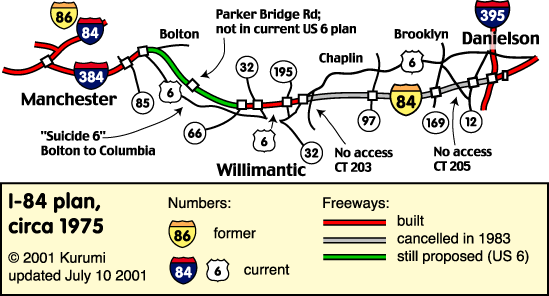The Master Highway Plan for the Boston Metropolitan Area, 1948, laid out the framework for the system of future expressways inside Rte 128. It showed the existing Rte 1 through Saugus as the one and only highway to the northeast, feeding off of the (then) proposed NE Expressway. It wasn't until the late 1950s, after 90% Federal interstate highway funding happened, that the State decided to have a separate I-95 through Lynn Fells. This was probably deemed necessary because by then Rte 1 had been ruined by commercial development right up on the highway with curb cuts and driveway entrances.
The need for a separate I-95 expressway would have been avoided if, in the late 1940s before much development along Rte 1 had happened, the State had built frontage roads along Rte 1, thus making it a limited access expressway.
California had success doing this type of upgrade to highways in the 1950s, gradually upgrading a highway into a full freeway by building frontage roads alongside. I'm surprised the Mass highway czar at the time, William Callahan, didn't follow suit with Rte 1.


